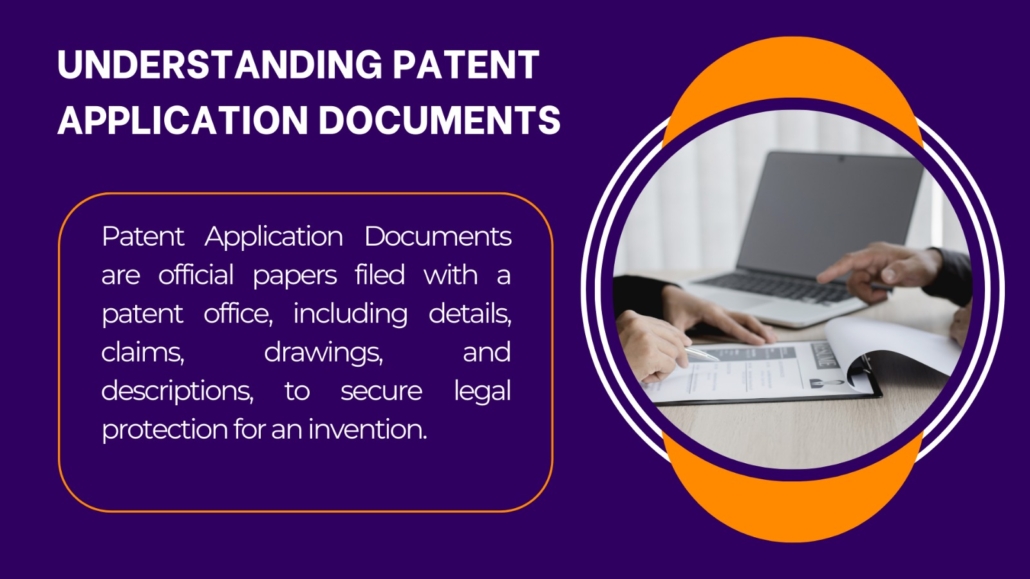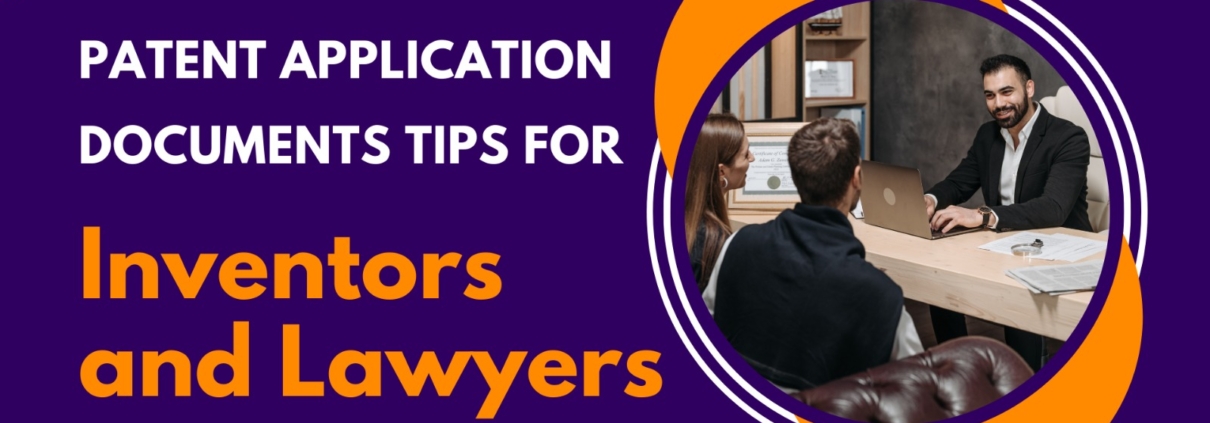Patent Application Documents: Tips for Inventors and Lawyers
Patent Application Documents: Tips for Inventors and Lawyers
Key Takeaways
- Patent documents secure intellectual property.
- Inventors provide details; lawyers ensure legality.
- Clear claims and drawings are crucial.
- Avoid mistakes for patent approval.
Patent application documents are crucial in the quest for intellectual property rights and protection of the inventions from an inventor from unauthorized use. These papers, though involving the invention’s detailed description, claims, and technical drawings, form a bedrock for getting a patent.
The lawyer uses the important technical details from the invention while the documents need to meet the high standards of the law for the best protection when inventors and lawyers work together they balance each other perfectly creating a strong and complete patent application that safeguards the uniqueness and value of the invention.
Understanding Patent Application Documents

A patent application generally comprises several key documents that each serve a distinct purpose in the patenting process:
- Claims: The claims define the boundaries of rights under the patent. They point out which precise aspects of the invention are asserted to be new. Claims have to be written clearly and concisely so that the unique features of the invention are well protected. They are usually independent claims, which are broad and general, and dependent claims, which are narrower and more specific, depending on independent claims.
- Drawings: Technical drawings are necessary to schematize the invention in case it is applicable; these are expected to be clear, properly labeled, and free from unnecessary embellishments. Drawings are particularly important in explaining complex inventions in a way that is supplementary to the written description.
- Abstract: The abstract is a summary of the invention, usually around 150 words. It will give an overview of the main features of the invention and is used by patent examiners and researchers to quickly understand the nature of the invention.
Legal Requirements for Each Document Type
Each document in a patent application must adhere to strict legal guidelines to ensure the application is processed efficiently and has the best chance of approval:
- Claims: Claims should be clear and precise. Ambiguity in the claims can cause patent protection scope defects. Overly broad claims are subject to rejection or invalidation of the patent. The claims should further be supported by detail description in the specification.
- Drawings: Patent drawings must also meet formal requirements regarding scale, clarity, and labeling. Poor or non-compliant drawings can delay the process or lead to a refusal.
- Abstract: The abstract is not part of the examination process. However, it still has to be clear and concise to aid patent examiners and the public to get a quick view of the general essence of the invention.
They, once developed properly, form a good basis for patent protection and can keep inventors out of legal quagmires in the long run.
Role of Inventors in Preparation of Documents
Inventors are part and parcel of preparing patent application documents since they offer the technical backbone of the whole application. They, therefore, write descriptions of their inventions in detail showing how they work, what they do, and what is specific about them. They must, in addition, define the specific claims, which are definitions of the legal scope of protection to be covered by the patent. These have to be well done since they determine the breadth of protection for any patent.
It is now that the final stages of document preparation are critical, requiring clarity and precision. Lack of or vague disclosures can result in compromised patent protection or outright application rejection. Thus, it is now the time for inventors to play a critical role in increasing the chances of patents being granted and defensibility against potential challenges.
Role of Lawyers in the Process
Lawyers are called upon to play a very important role in checking patent applications against legal requirements and strategizing them according to the maximum protection possible. They guide the inventors on the complexities of patent law, writing clear enforceable claims, and ensuring that the invention is described in a way it does not create confusion with existing art.
This is important for meeting patentability criteria. Lawyers also assist in clarifying identified risks and guiding on a draft of claims that expand the scope of protection while reducing risk vulnerabilities.
Attorneys check on completeness and consistency before filing patent documents. Ensuring all the necessary elements, such as specifications, claims, and drawings are there along with proper formatting meet the requirements of the patent offices. This process will avoid simple mistakes like vague language or incomplete disclosure from defeating the validity of the patent.
Patent Documents Optimization Using PDF Tools
Merging PDFs is helpful because a patent application often includes many parts like descriptions, claims, drawings and abstracts putting them all into one PDF makes submission easier and helps the patent office or legal teams review everything in a smooth and organized way
Convert PDF to YAML: Using a PDF file to represent technical patent details and claims in YAML might help make the data analysis and integration into patent management systems more efficient. YAML (YAML Ain’t Markup Language) is a lightweight data serialization format that is easy to read and write.
Splitting PDFs: For example, a very long patent application might be too big and should be divided into smaller parts to review or resubmit easily. In splitting PDFs, applicants can break long papers into individual parts to separate claims from technical descriptions or drawings.
Editing PDFs: Editing PDFs enables patent applicants to make any changes needed in their documents before submission. Since patent applications usually take multiple drafts, the possibility of editing text, updating claims, or modifying diagrams within a PDF ensures accuracy as well as completeness in the final submission.
Common Mistakes to Avoid in Patent Application Documents
Avoiding these common mistakes would improve the inventors’ chances of securing a valid and enforceable patent significantly, as well as those of lawyers.
Common Drafting Mistakes and How to Avoid Them
If the technical features of the invention are ambiguous, then delays or even rejections may occur. One must provide detailed information on how the invention works, what the parts of it are, and what its new aspects are. It is necessary to be specific enough that the patent application does not weaken or have its protective capability diminished.
Inventors and lawyers should cooperate over fulfilling all of the legal requirements for patent applications, such as proper disclosure of all relevant prior art and satisfaction of formalities. Applications that are incomplete or not according to procedural rules may be rejected or invalidated, leaving the invention unprotected. According to the US Patent and Trademark Office, nearly 20% of patent applications are initially rejected, many of which could be avoided through thorough review and careful drafting.
The Concluding Remarks

The inventor brings the ideas and technical foundation while the lawyer makes sure everything is strong from a legal side when both work together and avoid common mistakes the chances of getting a patent approved go up using simple PDF tools to merge split and edit files makes the process smoother and keeps documents well organized a clear and well prepared patent application not only protects the invention but also sets the stage for future success and legal security




Leave a Reply
Want to join the discussion?Feel free to contribute!